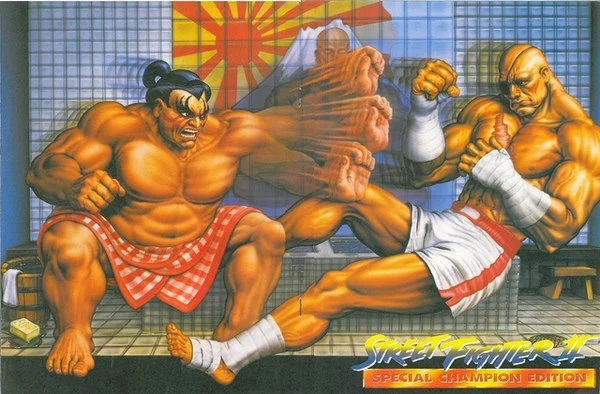Having been a relay operator for a few years, this is true even in English. You might be able to guess what someone is saying (and the floor managers always encouraged trying to) but you’ll never have 100% accuracy and it’s far less confusing to the person getting the “translation” if you don’t have to make any corrections by actually waiting for the person to finish their sentence.
What are the last two characters?
It’s the Japanese copula
a copula is a word or phrase that links the subject of a sentence to a subject complement, such as the word is in the sentence “The sky is blue” or the phrase was not being in the sentence “It was not being cooperative.”
Desu sort of means “it is”, but it is a sentence ending formality.
While the other answer is correct and more comprehensive, in this phrase the particles are purely used to make the phrase “polite”. Take them out and the phrase is semantically correct and has the exact same meaning, but it can now only be used in an informal settings (between friends, family, …)
Disclaimer: I have only basic knowledge of Japanese, and my Japanese teacher would enthusiastically confirm.
I don’t speak a lick of Japanese but I found this online:
です is used to mark words as polite if they cannot conjugate to show politeness themselves… です is one of the most fundamental words in the Japanese language. It’s super useful — it can be attached to just one other word to form some basic sentences. It’s also quite safe to use since it’s part of the polite form, so you’re unlikely to offend someone with this word… です can be tacked onto the end of a noun, な-adjective, or い-adjective to form a polite, positive, present tense sentence (say that ten times fast 😉). In other words, it allows us to talk about something that is true, and relevant to the present moment and/or the future—all in a polite way of course.
So it’s bitte for Japanese?
Ja
That’s a tricky one. I guess it sort of means “it is that” if you take it super literally? “It is that I want to try on the suit.” But in practice, it just adds a level of politeness and formality to the sentence.
You will hear a lot of masu (ます) and desu (です) tossed in there all over the place when people are trying to be courteous.
It bothers me that “desu” (the last two characters) aren’t pointing at the period at the end of the sentence.
I lived in Japan for 3 years and took an elementary Japanese college course from an old Japanese lady while I was there. She always described “desu” as an audible period mark. Formally declaring the end of a sentence. Simply adding it to the end of a word can turn it into a full and complete sentence.
As other comments mentioned, removing it makes the sentence less formal, which is fine with friends and family. There are several ways to speak Japanese depending on who you’re talking to. Whether it’s a friend, a lover, your boss, a stranger… there are several variations of politeness/formality to the language, which makes it very difficult to learn how to speak properly.
“Desu” is pronounced “dess” (don’t say the “U”) in traditional dialects. Or if you’re from Southern Japan, their “southern drawl” includes pronouncing every single character, so you’d pronounce it “de-soo.”
How the fuck did I learn Mandarin but this confusing the fuck out of me.
Mandarin has the same subject-verb-object as English, generally
I’m now convinced the Pacific makes you speak backwards.
Is it odd that I want a whole website of these charts where I can compare the way many many different languages translate the same sentence and see the lines between the meaning components in them?
Then you and I are both odd because that sounds fascinating.
If you find one, please share with the rest of the class. That would be cool to see.
If i were to real time translate, it would be something like: I went to a shop across the hotel, I saw a suit there, and I wanted to try it on.
More like:
My hotel’s vicinity, within it there is a store where I saw a suit that I want to try on.
It doesn’t say anything about going to the store and it is in the current tense of wanting to try on something that you past-tense saw within the subordinate clause.
Japanese particles.
Particles are used together with words to mark their grammatical role in the sentence.
私(は) - I (subject)
ホテル(の)向かい(に) - hotel (possessive) across the street (to)
(お)店(で) - (just makes the sentence more formal) shop (in)
スーツ(を) - suit (object)Fun thing about particles is that word order is a lot more flexible compared to English. As long as the right particles are attached to the right words, you can sometimes* swap around the order of these words and still be grammatically correct.
Maybe for an ideal translation, but I think even real-time transliteration would be awesome… and might even start blending grammar patterns across borders.
By bad dubs of Japanese samurai movies, based on deliberately Yoda’s idiosyncratic speech pattern was.
So when do I get a UT?
I too have the same problem with German. After 3 years of continuous learning have I still not get the problem, when prefix of verbs comes at the end, over with. When the prefix comes at the end of the sentence, have I always the verb forgotten.
Fremdsprache schwierig ist, Yoda says.
I’ve often wanted a direct literal translation in the subtitles.
Like, I want my subtitles to read
I hotel from the street across that’s a shop I saw a suit on try want to.
Because then at least I can learn to understand “Watashi” is self-reference, and match up the phonetics with the words.
I love this idea!
The translation isn’t as direct as the lines in the image imply though. “Watashi wa” becoming “I” hides that “wa” is a grammatical marker for the topic, kind of, of the sentence. More complete it’s like, “I, as the topic of this sentence”. You end up with a direct in place translation of “I, as the topic, a hotel’s across the street, as a location, a shop, as a setting, exists, saw a suit, to which, wearing as a desire, is true”Transliteration of individual characters is a surprising good way to understand/learn Chinese. A colleague of mine once read the whole Tao Te Ching this way.
Lol try slavic languages and hungarian where the word order is extremely flexible. Ive always had a hard time translating between hungarian and english even tho im basically native in both of them. For example “A kutya kergeti a macskat”, “A macskat kergeti a kutya”, “Kergeti a macskat a kutya”, “Kergeti a kutya a macskat”, “A macskat a kutya kergeti” and “A kutya a macskat kergeti” are all valid and mean the same thing but the emphasis is on a different part of the sentence. Kinda insane from the perspective of english where “The dog is chasing the cat” and “The cat is being chased by the dog” are the only valid orders and even that is cheating as i would translate the second one a bit different into hungarian because once again the focus changes. Also there are a lot of things in common speach that i dont know how a translator would translate. In hungarian for example we have a ridiculous amount of curse words and combinations that are simply lost when translating. “A ménkű csapjon bele a jó dagadt gecis faszszopó román kurva anyádba” is something(or idk it was similar to this) i have actually heard from a real person in a real conversation. I wont translate it becauase its extremely vulgar but you get the point. The other thing is, returning to japanese for example, there are a few things that can be represented in one language but not in another one like honorifics for example. Last thing is when translating without context pronouns probably get completly lost. How would an ai looking only at the text know who the “you” was aimed at. Especially when translating to languages where even you has different forms depending on gender for example. All things thatll have to be solved i guess.
The only word I recognized is Kurva.
I had thought about learning some Japanese but after seeing this, I’m doubting I could.
Spoken Japanese is not insanely difficult for English speakers, although it is more difficult than Romance languages.
If you try to learn to read and write, you’re in for a world of pain. Probably 3 years of working on it several hours a day. In fact, even Japanese people are losing the ability to write by hand, because it’s easier to type in the phonetic words and have the computer figure out which characters to use.
In fact, even Japanese people are losing the ability to write by hand, because it’s easier to type in the phonetic words and have the computer figure out which characters to use.
That does not seem like a healthy thing for a society. Too dependant on technology to do the a basic form of communication.
I think it’s an indication that the written language is not reasonable for the modern age. Granted, Japanese has 2000 characters in everyday use, versus the 10,000 in Chinese, but each character could have up to six or seven different pronunciations based on the context, whereas I think Chinese has one or at most two.
The sticking point is that written Japanese can carry a lot of nuance. For a given word, you may be able to use different characters to emphasize certain meanings. Losing that would be traumatic, especially because the culture has a great deal of love and respect for their heritage.
You can learn up to early intermediate Japanese pretty easily because you don’t have many inflections to worry about–there are no plurals, no verbs changing according to person (I vs he vs they), no articles, etc. And the verb conjugation is very rigid with literally only two irregular verbs. Also the pronunciation is pretty easy coming from English.
If I had to think about the one aspect that makes it so difficult to continue progressing it’d probably be that not being able to read is a huge roadblock to a major form of language acquisition. That plus a limited amount of sounds makes tons of words homophones or similar. For example you’ve got ko-kyu-u (breathing) vs ko-oh-kyu-u (high quality, high salary, or permanence depending on how you write it). Yeah they have different pitches (kind of like tones but not really), but that’s just another thing you’ve gotta remember.
The hotel’s neighbor across had a suit I wanted to try on.
You can find less complicated constructions that parallel their order.
Sure, but that sounds clumsier and hides the meaning of the statement at the end which isn’t usually how English speakers talk. It may be a less complicated translation but it isn’t a better one.
Sure. But if you knew how to construct your scentence to make translation that easy you probably wouldn’t need a translator.
It would be better to have a layer in between. That layer would consist of concepts.
E. g. “I” <-> self-reference & object <-> “watashi”
or “I” <-> self-reference & subject <-> “watashi wa”.That’s how translation software often works.














